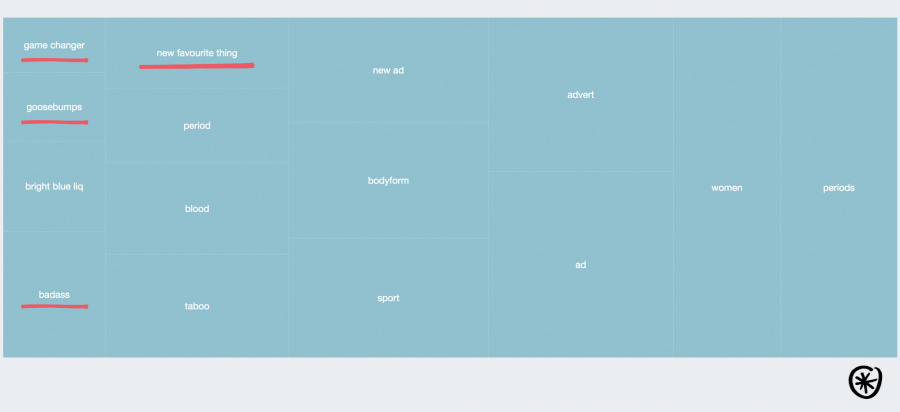Binaries are no longer the norm, so how should your campaign talk about gender?
Over the past year, the global, collective conversation about gender equality has shifted.
On social media, #MeToo dominated the end of last year and now gave way to #TimesUp. Mainstream media also caught on, with Time Magazine picking the Silence Breakers as person of the year, while in the cities around the world just this last weekend, hundreds of thousands gathered for Women’s Marches in support of equality.
Even in Adland, something seems to be changing.
This year – following on from the deluge of complaints triggered by Protein World's infamous 'beach body ready' campaign in 2015 – the UK's Advertising Standards Authority banned the use of harmful gender stereotyping in advertising, such as instances where a woman is solely responsible for cleaning. Casually sexist ads also routinely get shamed in end-of the year lists.
Yet brands and agencies are still quite careful: most are aware that any attempts to dive into controversial topics might expose them to backlash, boycotts, or labels of opportunism. That is doubly true with gender stereotypes, given the ad industry's less than stellar record on that front in past decades, and an ad targeting system that is still mostly based on binary demographics.
Some companies, however recently took the plunge. Here's what they had to say, how they were received on social media, and what we can learn:
Getting it right - Bodyform and Nike India
In April 2016, Bodyform released its “Blood” ad, featuring women engaged in extreme sports. Blood is the key visual theme, and there’s a lot of it!
The campaign garnered a lot of praise, with many women hailing it as a “game-changer”. A look at the topic visualisation on Pulsar TRAC around the campaign reveals that the ad evoked a high degree of emotional resonance, with words like “goosebumps” coming up frequently.
(Source: Pulsar TRAC topics visualisation)
This reaction provides an encouraging glimpse into how speaking to women in the way that resonates with them really pays off. Taking a risk paid dividends for Bodyform, partially because of the pioneering fact that the ad was amongst the first sanitary product commercials in the UK to feature blood, as opposed to clinical blue liquid. This was responsible for a lot of its online celebration.
Nike India’s 2016 ‘Da Da Ding’ ad also offered a bold snapshot of powerful women that resonated with feminist audiences, invoking the ‘strong not skinny’ trend that has dominated women’s fitness campaigns recently. This spot felt even more striking within the Indian market, whose gender inequality is often reported in the news.
Drawing on an established successful formula for sports ads, this video didn’t take wild risks, and while in this case the brand’s target audience is exclusively made up of women, it also managed to appeal to an intersection of women. It works, for now.
When it comes to brands whose audiences are not gender-specific, does the recipe for success differ? Perhaps the key to successfully connecting with the audience is looking beyond binaries.
Beyond gender segmentation - Smirnoff and Levi’s
While using gender as a starting point for demographic targeting may appear inevitable, it may not always be the most effective way of segmenting the audience.
Cue Smirnoff’s #WeAreOpen campaign. It has the bold tagline “labels are for bottles, not people”, and is made up of a series of ads celebrating diversity. The latest spot features trans and non-binary party-goers, while a previous commercial focuses on a Swedish-Iranian artist Nadia Tehran. People of different genders, ages and ethnicities are present in both ads, with the urban underground music scene serving as a backdrop.
Similarly – if a bit less boldly – the recent Levi’s 'Circles' spot is high-energy, depicting people from all walks of life, united through their passion for dance. The message at the end encourages to put aside the differences and “live how we dance.”
Both campaigns were embraced by the audience, with people praising the brands for the positive unity message.
Absolutely LOVE the new @SmirnoffEurope advert, #labelsareforbottlesnotpeople couldn't have put it better any other way! #beyourself #bewhatmakesyouhappy
— Alex Kane (@AlexKaneWriter) December 23, 2017
So happy to see "Circles" from @LEVIS on this list. LOVE that ad https://t.co/5a86fxzkuP
— Daynah Singh (@Daynah_Singh) December 16, 2017
These brands are appealing to the audience’s interests and passion areas, rather than basic demographics attributes. The argument for segmenting audiences based on their belonging to a passion tribe, rather than a pre-set demographic segment has been gaining more traction in the last few years.
By championing the message of unity in their ads, both Smirnoff and Levi’s are able to speak to a number of potential audience tribes at once: LGBTQ, activists and equality advocates, young creatives, immigrants, dance and music lovers, and street fashion followers, to name but a few.
For many consumers, belonging to these tribes may be way more meaningful to their self-identification than their gender. Communicating with a range of macro-stories rather than the generic umbrella of gender allowed the brands to connect in new ways.
Where to next?
The world is accelerating, and so is the pace of conversations happening in the socially networked space. Brands and agencies can expect controversial topics and polarizing issues to keep catalyzing attention and conversations.
Knowing whether to say something, and what to say, will come down to how well companies understand their audience.




